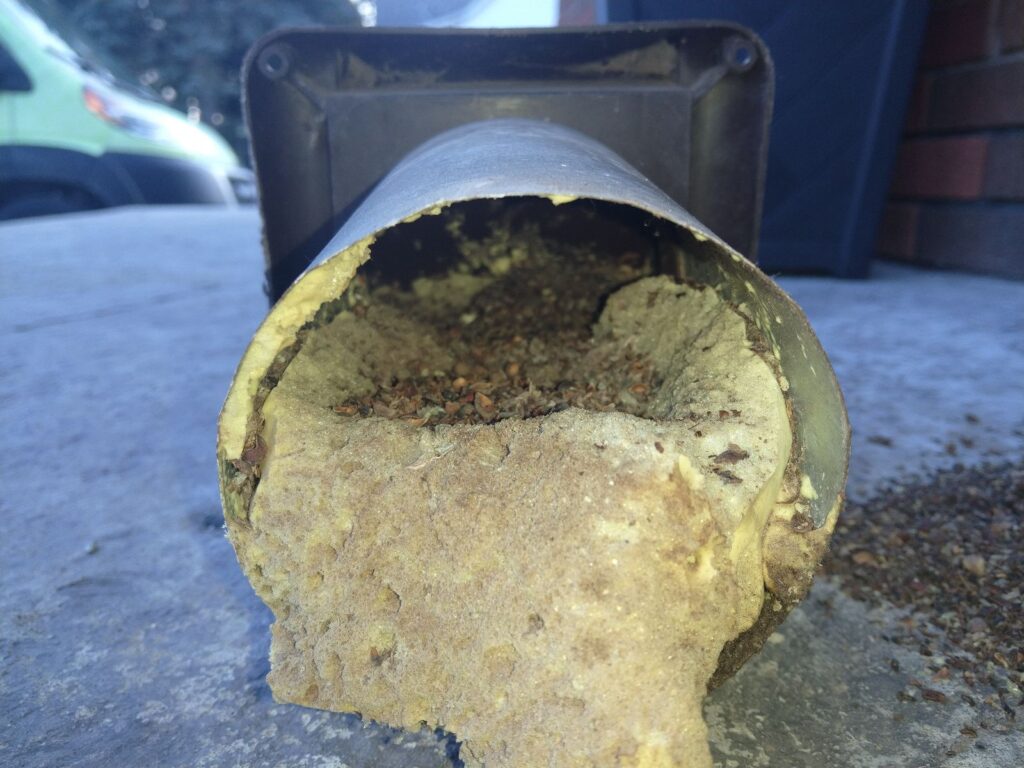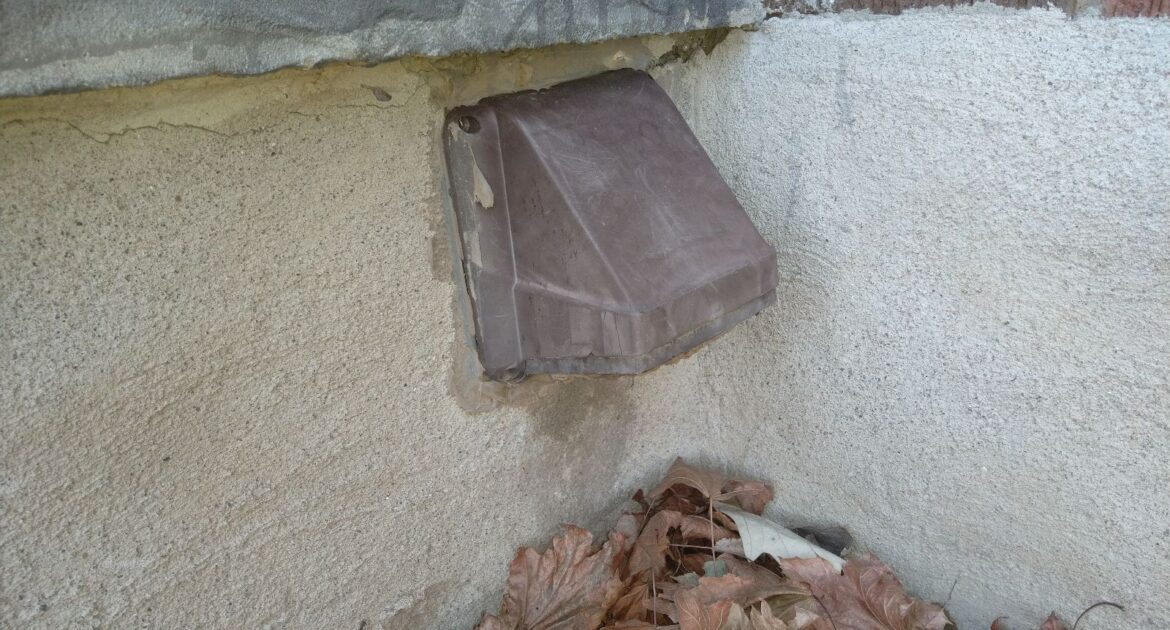In December of 2022, Skedaddle Humane Wildlife Control technician, Anton Sayer, arrived at a home in Niagara Falls with a considerable mouse problem, and the details of how the rodents got in and where they made their home highlights how inattention to construction issues can invite mice into a human dwelling.
When it comes to invasive species, rodents, particularly mice, seem to have a talent for finding their way into homes and making nests in attics, crawlspaces, basement clutter, and even in heating and cooling vents. Almost any hole or exterior gap is an invitation for mouse entry, especially when poor construction and unfinished repairs leave a home open to infestation. In this blog, follow a Skedaddle wildlife technician on a mouse removal job, and learn about how our homes are vulnerable to infestations.
The Technician’s Arrival

When our technician first arrived, he inspected the home to discover where the mouse infestation began and how the rodents had initially entered. After reviewing the home’s exterior, he found an unused dryer vent by the building’s front step. The homeowners no longer used the vent, as they had removed the dryer some time ago and sealed the vent from the interior of the room. However, the empty vent gave mice ample opportunity to use the vent not for several uses, including:
- A safe nesting place
- Food storage
- A hidden space to rear young
While removing the dryer did reduce the chance of a fire hazard, the mice caused considerable chewing damage while nesting in the empty vent.

Inspecting the Entry Point
Once our technician discovered the unused vent, he opened it from the exterior of the home to discover a large food cache of seeds and other bits of food, along with nesting material the mice used to stuff the empty vent with. Previous construction workers used plywood to block the other end of the unused vent, which kept mice out of the home itself, but like most rodents, mice chew and gnaw to keep their front teeth filed down, as they grow throughout the animal’s life. While the mice had yet to chew through the plywood, it was more than possible for them to do so over time. Our technicians see mice using poorly constructed or repaired areas on a home to get inside every year. However, since homes are not constructed with mice in mind, every home new or old is susceptible to a mice infestation.

Cleaning the Infested Area
Once our technician opened and removed the vent hood completely, he discovered more seed and damaged spray foam the mice chewed for nesting material. It appeared the mice had lived in the vent for some time, as the tech found it stuffed with food and droppings. This is a usual behavior for mice who often used secluded areas to stockpile their food, however due to the unique access point of the mice, they had created a significant pile of hazardous materials and food.
After removing all the nesting material and feces safely, our technician also searched for and humanely removed any living specimens, as mice will bite and use their claws to defend themselves and their young. For this reason, along with the possible spread of disease, homeowners may want to avoid handling mice and leave the cleaning and removal of the rodents to our removal technicians, who have the tools and the know-how to handle mice in home infestations.

Preventing Reinfestation
With years on the job removing mice from homes, our technician knew mice would return if the vent remained open, so he removed it from the exterior of the home and replaced it with a one-way door. All the small gaps and cracks along the home’s exterior were carefully sealed to prevent their ability to squeeze or chew their way inside in the future. Once all the mice had exited the door, they would find the entrance inaccessible and no longer available as a nesting site. Two moths later, all the mice had left the home and there was no signs of their activity. This is when our technicians completed the final step of removing the one-way door from the home. Once the one-way door were removed and the home looked as good as new, our technician gave the homeowners some tips regarding how to keep mice from returning, such as:
- Sealing trash cans firmly
- Storing pet kibble in chew-proof containers
- Keeping tree branches and shrubs trimmed back
A mouse infestation can occur almost anywhere in your home, but our experienced technicians can help. This story is a great example of how mice are able to create damage in undetected areas or a home, and why regular home maintenance is a key way to prevent a mouse infestation. With the help of experienced technicians, homeowners can be assured that their is safe and protected from wildlife for years to come. Contact us today for an appointment and reclaim your home from unwanted rodents for good.



